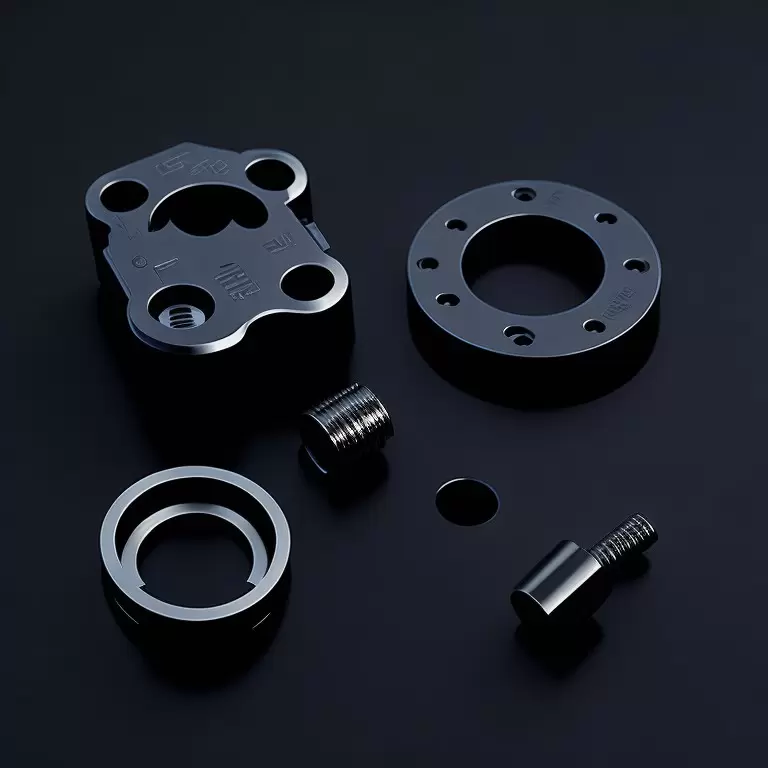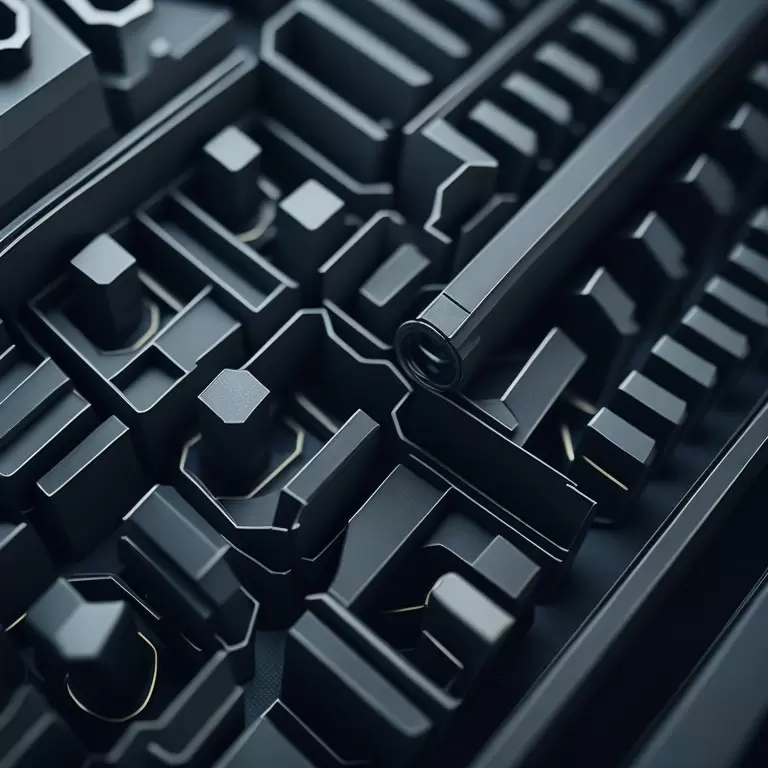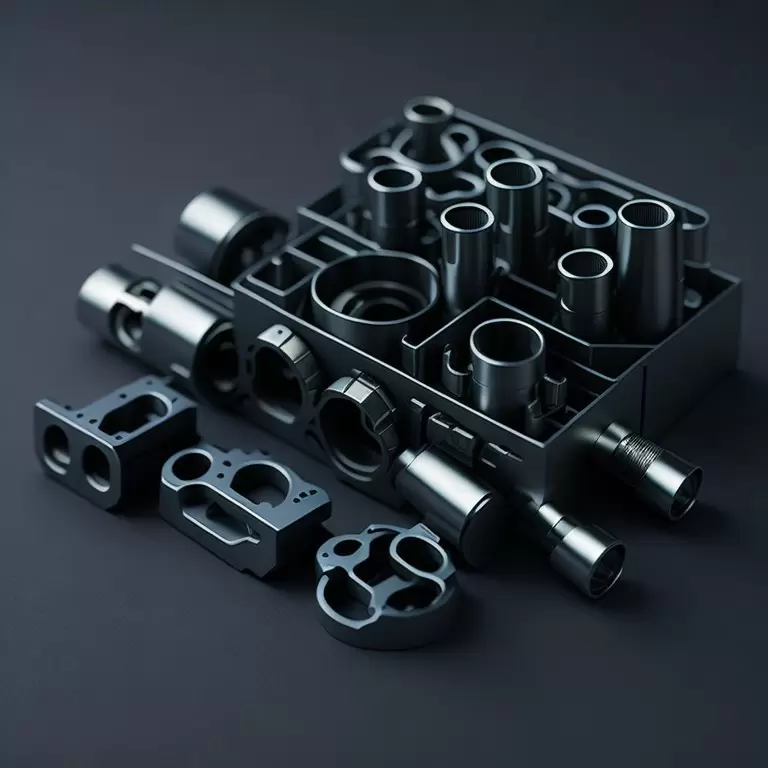Table of Contents:
- Introduction
- Materials Used in Precision Mold Parts
- Manufacturing Techniques for Precision Mold Parts
- Manufacturing Techniques for Precision Mold Parts
- Advancements in Precision Mold Part Technology
- Applications of Precision Mold Parts
- Maintenance of Precision Mold Parts
- Conclusion
-
1.Introduction
Precision mold parts are unique components that are specifically designed to fit into a mold and help accurately shape and form various materials used in manufacturing. These parts allow manufacturers to create products with high precision, accuracy, and consistency.
Precision mold parts are essential in many industries, including automotive, aerospace, electronic, medical, and plastic molding. The ability to produce products with intricate designs and tight tolerances is made possible with precision mold parts. This helps improve the overall quality of the finished product and enhances customer satisfaction.
In this article, we will explore the various materials used in precision mold parts, manufacturing techniques, design considerations, applications, and maintenance requirements. We will also delve into the latest advancements in precision mold part technology and their implications for the future of manufacturing.
-
2.Materials Used in Precision Mold Parts
Precision mold parts are made from a variety of materials, each with unique physical and mechanical properties that determine how well they perform under various manufacturing conditions. Here are some of the most commonly used materials in the production of precision mold parts.
- Steel Alloys:
Steel alloys are a popular choice for precision mold parts due to their high strength, durability, and corrosion resistance. They are also relatively easy to machine and can be customized to meet specific application requirements. Commonly used steel alloys include P-20, S-7, and H-13.
- Tool Steel:
Tool steel is a specialized material designed specifically for use in manufacturing tools and dies. Tool steel is highly wear-resistant and can withstand high temperatures and pressures, making it an ideal material for the production of precision mold parts. Some common types of tool steels used in mold making include D-2, A-2, and O-1.
- Carbide:
Carbide is a compound consisting of tungsten or titanium combined with carbon. It is extremely hard and resistant to wear and tear, making it an excellent material for the production of precision mold parts. Carbide is especially useful for stamping applications and can be used to create complex geometries efficiently.
- Ceramics:
Ceramics offer superior hardness and wear resistance compared to other materials used in precision mold parts. They are chemically inert, making them ideal for use in high-temperature applications like injection molding. Ceramics are more expensive than other materials, but their long lifespan and low maintenance requirements make them a worthwhile investment.
The choice of the material used in precision mold parts depends on the specific needs of the application, environmental conditions, and the performance desired from the finished product. With the advancement in material science and technology, more materials are becoming available that offer a higher level of precision, durability, and customization in mold making.
-
3.Manufacturing Techniques for Precision Mold Parts
Precision mold parts require high accuracy and tight tolerances to ensure they fit with other parts and produce products with high accuracy. Here are some of the manufacturing techniques commonly used in the production of precision mold parts.
Machining is a subtractive manufacturing technique that involves removing material from a blank to shape the final part. It is a highly versatile method that can produce parts with high precision and tight tolerances. Machining is often used to create mold cores and inserts, as well as other intricate parts required in mold making.
- EDM (Electrical Discharge Machining):
EDM is a non-traditional method of machining that uses electrical discharges to shape the workpiece. The process involves creating an electrical spark between the workpiece and a metal electrode, which erodes small pieces of material from the workpiece. EDM is ideal for creating complex shapes, thin-walled parts, and intricate details that are difficult to achieve using traditional machining techniques.
- Injection Molding:
Injection molding is a process of heating a plastic material to a molten state and injecting it into a mold cavity to take its desired shape. Once the molten plastic solidifies, the mold is opened, and the part is ejected. Injection molding is used to create high volumes of plastic parts with high precision and repeatability.
- Laser Cutting:
Laser cutting is a non-contact process that uses a high-powered laser beam to cut through materials. It is a precise and fast method of cutting and is ideal for creating intricate shapes with high precision. Laser cutting is often used to create inserts for molds or to cut materials such as ceramics, composites, and metals.
Each manufacturing technique has its unique advantages and limitations. The choice of the technique used is usually made based on the design requirements, material type, the quantity of the parts required, intricate details, and the time and budget constraints. Using appropriate manufacturing techniques ensures that the precision mold parts meet the required tolerances and specifications critical to creating quality products.
-
4.Manufacturing Techniques for Precision Mold Parts
Design considerations are vital to creating precision mold parts that meet the required tolerances and specifications. Here are some critical design factors to keep in mind when creating precision mold parts.
- Tolerance Requirements:
Tolerance requirements refer to the allowable deviation in the size, shape, and other critical dimensions of a mold part. Since precision mold parts must fit accurately with other parts in the assembly, it’s essential to design and manufacture the parts with tight tolerance requirements. A single variation beyond the tolerances requirements can result in an out-of-spec part.
- Surface Finish:
The surface finish of a precision mold part can significantly influence the final product’s quality. A rough surface can cause friction, leading to material sticking in the mold cavity, while a smooth surface can prevent material overflow or defects. Achieving the desired surface finish requires selecting the appropriate manufacturing technique, material selection, and surface treatment.
- Heat Treatment:
Heat treatment involves subjecting the mold part to carefully controlled temperatures to alter its mechanical, chemical, or physical properties. Heat treatment is crucial to improving the mold part’s wear resistance, hardness, and strength but must be done correctly to avoid structural flaws.
- Mold Coatings:
Mold coatings can be applied to a precision mold part to optimize its performance and extend its lifespan. Coatings can help prevent wear, reduce friction, and protect the part from corrosion or heat damage. Selecting the suitable coating for a mold part requires evaluating the desired lifespan and environment of the part.
Designing precision mold parts require taking into account the intended application, material, manufacturing techniques, and performance requirements. An efficient part design can save material costs and reduce production time while ensuring the product meets strict quality, stability, and longevity targets.

-
5.Advancements in Precision Mold Part Technology
As technology advances, new ways are emerging to design, manufacture and coat mold components, allowing more intricate or more precise designs to be created. Here are some of the recent advancements in the technology of precision mold parts.
- Nanotechnology Coatings:
Nanotechnology coatings are thin layers of material placed onto the surface of precision mold parts to achieve optimum manufacturing performance. They can add a wide range of features, such as corrosion resistance, increased hardness, minimized friction. With the coating, the mold part’s lifespan can be extended, and its maintenance can be reduced. Nanotechnology coatings help precision mold parts to perform better and increase their resistance to wear and tear. - 3D Printing:
3D printing technology has revolutionized the production of plastic and metal products, providing manufacturers with an innovative way of creating unique components. With 3D printing, highly complex components with intricate geometrical features or shapes that were previously impossible to create, can be produced. 3D printing allows molders to produce more accurate and precise parts quickly, with low lead time and lower costs. - Simulation and Modeling Software:
Simulation and modeling software enable designers to create and modify digital designs of the precise mold component prior to production. Using computer-aided design technology, this software furthers optimization of mold design and part performance. In addition, simulation and modeling software can help in evaluating and predicting performance, providing insight into how the parts will behave in different conditions, thus enabling manufacturers to optimize their production plans, increase reliability and reduce costs.
Research into precision mold part technology has a promising future. The potential to innovate and apply the latest technology to precision mold components opens up possibilities in the areas of design, customization, and material selection. Robustness and efficiency of precision mold parts can further improve product durability, output spillover, and performance.
-
6.Applications of Precision Mold Parts
Precision mold parts can be used in various industries, including plastic moldings, metal stamping, electronic components, and medical equipment. Here are some examples of how precision mold parts are utilized in these industries.
- Plastic Moldings:
Plastic molding is a common application for precision mold parts. The plastic is melted and injected into the mold cavity to take the desired shape. Precision mold parts are used in this process to achieve high accuracy, repeatability, and consistency. Plastic moldings can be found in a wide range of products, including consumer goods, packaging materials, automotive parts, and medical devices.
- Metal Stamping:
Metal stamping involves cutting, bending, or shaping metal sheets into specific parts using force and a die. The die used in metal stamping is often made of high-strength materials like carbide and steel alloys. Precision mold parts are used in metal stamping to create more intricate or complex parts with high accuracy and repeatability. This process is commonly used in industries like automotive, aerospace, and electronics.
- Electronic Components:
Precision mold parts are used in the production of electronic components, such as connectors, housing, and shells, which require high accuracy and tight tolerances for proper functionality. These components must also provide excellent heat dissipation, electrical insulating, and structural stability. Precision mold parts enable electronic products to be smaller, more efficient, and reliable.
- Medical Equipment:
Precision mold parts play a critical role in fabricating orthopedic implants, hearing aids, and surgical devices. These parts must have the accuracy that can meet stringent tolerance requirements, biocompatibility, and durability needed to help improve safety and performance in patient care. Precision mold parts allow for the creation of fragile, tiny, and highly critical components, providing better service delivery to patients.
The use of precision mold parts continues to expand across various industries with innovation in material science, coating technology, and design optimization. The accuracy, repeatability, and efficiency in product prototyping, mass production, and equipment have revolutionized modern-day manufacturing.
-
7.Maintenance of Precision Mold Parts
Maintenance is crucial to keep precision mold parts running efficiently and avoid scrap or downtime in the manufacturing process. Here are some essential maintenance practices to keep in mind when handling precision mold parts.
- Cleaning and Lubrication:
Precision mold parts need regular cleaning to remove contaminants, dirt accumulation, or residue from production material. A clean and lubricated mold helps in ensuring smooth operation, reducing friction between moving parts, and extending its lifespan. Proper lubrication and cleaning of precision mold parts ensure the parts’ longevity and prevent the costs of repairs or replacement.
- Inspection and Repair:
Inspection and repair of precision mold parts are essential to prevent component failure, ensure accuracy and longevity, and maintain the quality of the manufacturing process. Many of the precision mold parts can have surface damage or wear and tear after prolonged usage, leading to loss of tolerances or misalignment of the mold. Regular inspection will help identify problems that can be remedied before escalation or deteriorations.
- Replacement:
Despite proper maintenance, precision mold parts can become damaged, worn, or fatigued over time, making it necessary to replace them. The decision to replace the component depends on factors, including the frequency of use, fatigue, and routine maintenance procedures. A timely replacement will reduce losses in production time, manufacturing cost, and product quality.
The combination of regular cleaning, inspection, and repair of precision mold parts empowers manufacturers to optimize mold function, improve product quality, and increase production efficiency. Proper maintenance of precision mold parts and their molds reduces risks of scrap, equipment downtime, and significant costs associated with an inadequate lifecycle of the equipment.

-
8.Conclusion
In conclusion, precision mold parts are a vital component within the manufacturing industry, providing manufacturers with the flexibility to design, create, and manufacture unique parts with the accuracy and precision required for high-quality products.
Precision mold parts have evolved with the advancements in technology, enabling the creation of intricate and complex designs with higher quality standards. Innovations in coating technology, 3D printing, simulation modeling software and nanotechnology have further improved the efficiency and performance of molds at a lower cost.
Proper maintenance for precision mold parts ensures optimum and stable mold operation, reduces the risk of wear and tear, and significantly increases the parts and mold life cycle. Necessary precautions must be taken to ensure the parts’ correct cleaning, lubrication, inspection, repair to guarantee high-quality standards and customer satisfaction.
Precision mold parts continue to shape the future of manufacturing by providing flexibility in product design, faster time-to-market, and increasing product quality. As technology advances, precision molds’ suitability continues to thrive, as emerging events become more precise, innovative, and efficient in manufacturing processes.













